 To enhance service speed and avoid tariff delays, we've opened a US warehouse. All US orders ship directly from our US facility.
To enhance service speed and avoid tariff delays, we've opened a US warehouse. All US orders ship directly from our US facility.
| Cat. No. | Product Name | Field of Application | Chemical Structure |
|---|---|---|---|
| DC31025 | TLR4-IN-C34 Featured |
TLR4-IN-C34 is an orally active TLR4 inhibitor and reduces systemic inflammation in models of endotoxemia and necrotizing enterocolitis[1][2].
More description
|

|
| DC34454 | Gardiquimod Featured |
Gardiquimod is a TLR7 agonist, inducing the activation of NF-B in HEK293 cells expressing human or mouse TLR7.
More description
|

|
| DC10875 | Paquinimod Featured |
Paquinimod is a S100A9 inhibitor, which prevents S100A9 binding to TLR-4.
More description
|

|
| DC47256 | TJ-M2010-5 Featured |
TJ-M2010-5 is a MyD88 inhibitor that binds to the TIR domain of MyD88 to interfere with its homodimerization, and the TLR/MyD88 signal pathway. TJ-M2010-5 can be used for the research of myocardial ischemia/reperfusion injury (MIRI).
More description
|

|
| DC28230 | Loxoribine Featured |
Loxoribine (7-Allyl-8-oxoguanosine) is a guanosine analog with anti-viral and anti-tumor activities. Loxoribine is an orally bioavailable and selective Toll-like receptor (TLR) 7 agonist.
More description
|

|
| DC66322 | WAY-327512 Featured |
activate TLR8-dependent NF-kB signaling
More description
|
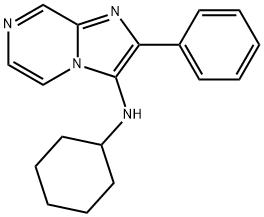
|
| DC73561 | E104 Featured |
E014 is a potent, selective TLR7 agonist with EC50 of 69 nM in Ramos Blue reporter assays, >500-fold selective for TLR7 over TLR8.
More description
|

|
| DC50032 | CU-CPT17e Featured |
CU-CPT17e shows strong NF-κB activation in TLR3, TLR8 and TLR9 HEK293 cells with EC50 values of 4.80±0.73, 13.5±0.58 and 5.66±0.17 μM, respectively. CU-CPT17e significantly improves the activity with 13.9±0.9 fold of NF-κB activation and an EC50 value of 4.8±0.7 μM. CU-CPT17e inhibits the proliferation of HeLa cancer cells by triggering apoptosis and arresting the cell cycle at the S phase. The induction of apoptosis by CU-CPT17e in HeLa cells is investigated. HeLa cells are cultured with increasing concentrations of CU-CPT17e or poly I:C or blank control (DMSO) for 24 h. Treatment with CU-CPT17e for 24 h at different concentrations (10 to 40 μM) results in an elevation of apoptotic cell population ranging from 10% to 17%, which is more effective than poly I:C at 5 μg/mL. These results suggest that the antiproliferative activity of CU-CPT17e against HeLa cells might result from its ability to directly induce apoptosis[1].
More description
|

|
| DC70332 | CU-CPD107 Featured |
CU-CPD107 is a TLR8-specific small molecule with unique synergistic agonist activities in the presence of ssRNA, but inactive without the aid of ssRNA.CU-CPD107 significantly inhibited of R848-induced signaling in HEK-Blue hTLR8 cells with an IC50 of 13.7 uM.CU-CPD107 only inhibited synthesized small-molecule agonist-induced TLR8 signaling without affecting other TLRs.CU-CPD107 synergistically increased IFN-β, TNF-α, IL-1β, IL-6, and IL-8 mRNA expression levels in the presence of 5 μg/ml ssRNA40 in HEK-Blue hTLR8 cells, whereas CU-CPD107 alone did not. CU-CPD107 only activated TLR8-mediated signaling in the presence of ssRNA.CU-CPD107 showed no pure agonistic activity, addressing a major challenge that has existed for previous TLR7 and TLR8 agonists as vaccine adjuvants or antiviral drugs.
More description
|

|
| DC49675 | D18 Featured |
D18 is an immune modulator. D18 acts as a TLR7/8 dual agonist (EC50=24 nM for hTLR7 and 10 nM for hTLR8, respectively). D18 increases PD-L1 expression through epigenetic regulation, thus sensitizing tumors to PD-1/PD-L1 blockade. D18 is a ADC cytotoxin uesd for the systhesis of ADC HE-S2.
More description
|

|
| DC44159 | Enpatoran Featured |
Enpatoran (M5049) is an orally active and dual TLR7/8 inhibitor with IC50s of 11.1 nM and 24.1 nM in HEK293 cells, respectively. Enpatoran can block both innate and adaptive autoimmunity. Enpatoran is inactive against TLR3, TLR4 and TLR9. Enpatoran (M5049) can block molecule synthetic ligands and natural endogenous RNA ligands. Enpatoran (M5049) inhibits cytokine release, causing great potency in pharmacokinetic/pharmacodynamic properties.
More description
|
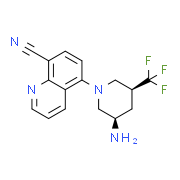
|
| DC10653 | TLR7-IN-1 Featured |
TLR7-IN-1 is a novel TLR7 inhibitor.
More description
|
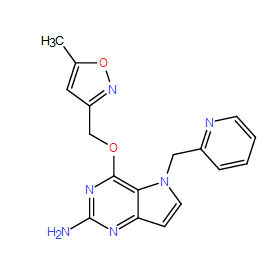
|
| DC31070 | M1002 Featured |
M1002 is a first-in-class HIF-2a agonists.
More description
|
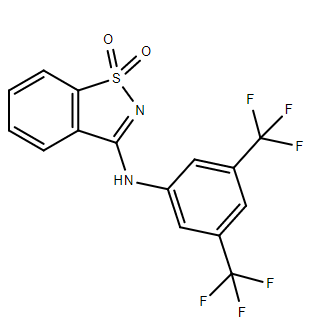
|
| DC10276 | C29 Featured |
C29 is a potential TLR2 inhibitor.
More description
|

|
| DC67233 | AYK004-C1 Featured |
AYK004-C1 is a TLR agonist. AYK004-C1 can be used to prepare immune adjuvants.
More description
|
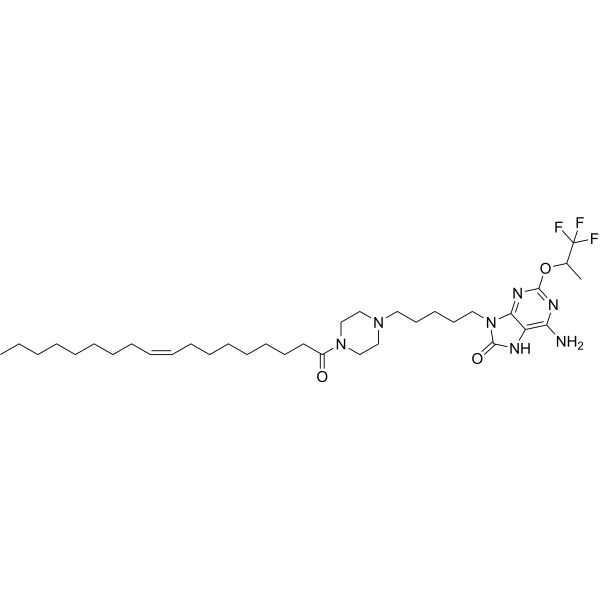
|
| DC28386 | GSK2245035 Featured |
GSK2245035 is a highly potent and selective intranasal Toll-Like receptor 7 (TLR7) agonist with preferential Type-1 interferon (IFN)-stimulating properties. GSK2245035 has pEC50s of 9.3 and 6.5 for IFNα and TFNα. GSK2245035 effectively suppresses allergen-induced Th2 cytokine production in human peripheral blood cell cultures. GSK2245035 is used for asthma.
More description
|

|
| DC67240 | KRN-7000(7DW8-5) Featured |
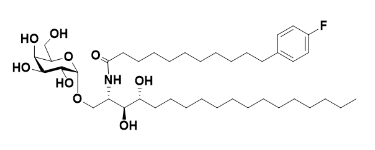
|
|
| DC67238 | KRN-7000(C34) Featured |

|
|
| DC67239 | KRN-7000(S34) Featured |
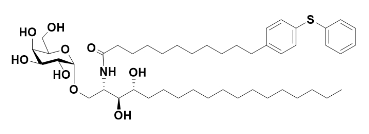
|
|
| DC28134 | α-Galactosylceramide Featured |
α-Galactosylceramide (α-GalCer) is a synthetic glycolipid with antitumorial and immunostimulatory. α-Galactosylceramide is a very potent NKT cell agonist and binds effectively to CD1d. The complex of α-Galactosylceramide plus CD1d binds the NKT cell TCR (T cell antigen receptor).
More description
|
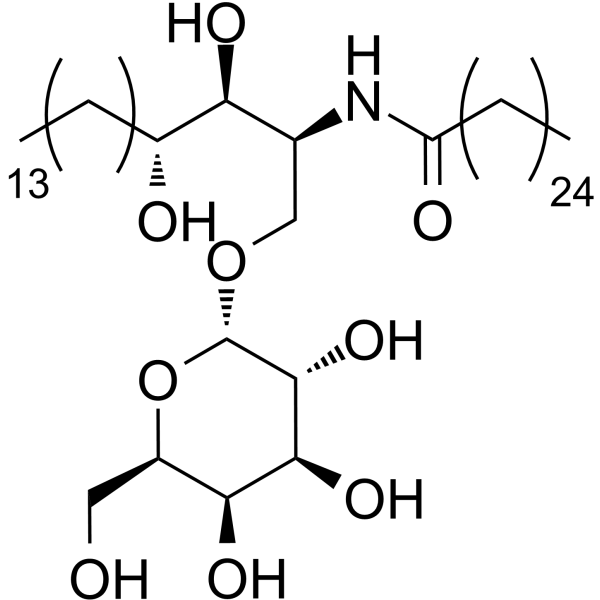
|
| DC67237 | TQL-1055 Featured |
TQL-1055 is a semi-synthetic analog of the saponin adjuvant QS-21 (HY-101092) and can be used as a prophylactic vaccine adjuvant. TQL-1055 exhibits robust adjuvant activity for influenza antigens. TQL-1055 combined with the acellular pertussis vaccine (aP) shows good tolerance and enhances the antibody response to pertussis toxin (PT) in mice and rabbits. TQL-1055 is promising for research of chronic hepatitis B.
More description
|
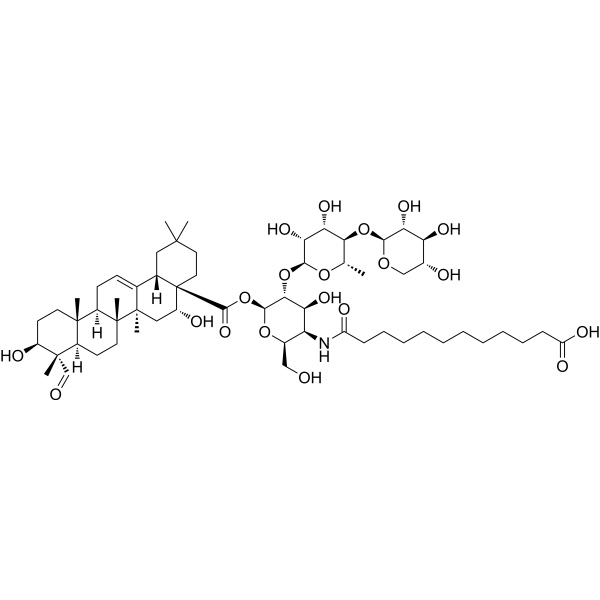
|
| DC67236 | QS-7 Featured |
QS 7 (QS 7 Api) is a saponin compound that can be extracted from the Quillaja saponaria tree. QS 7 activates immune cells, enhances their antigen presentation ability and cytokine secretion. QS 7 can be used as vaccine adjuvant for immunostimulating, anti-tumor, and anti-infectious activities.
More description
|
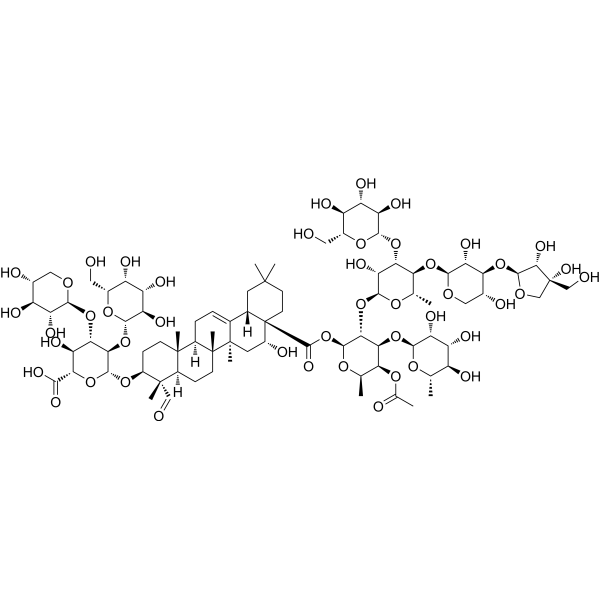
|
| DC67234 | CPG-1018 Featured |

|
|
| DC67235 | CPG 7909 Featured |

|
|
| DCAP008 | QS-21 Featured |
QS-21, an immunostimulatory saponin, could be used as a potent vaccine adjuvant. QS-21 stimulates Th2 humoral and Th1 cell-mediated immune responses through action on antigen presenting cells (APCs) and T cells. QS-21 can activate the NLRP3 inflammasome with subsequent release of caspase-1 dependent cytokines, IL-1β and IL-18[1][2][3].
More description
|

|
| DC2002 | Venetoclax(ABT-199) Featured |
Venetoclax (ABT-199; GDC-0199) is a highly selective, orally bioavailable small-molecule inhibitor of Bcl-2, exhibiting sub-nanomolar binding affinity with a Ki of less than 0.01 nM. This compound has been demonstrated to induce autophagy, highlighting its role in modulating programmed cell death pathways. In vitro studies reveal that Venetoclax exhibits potent cytotoxic activity against FL5.12-BCL-2 cells, with an EC50 of 4 nM, while showing markedly reduced efficacy against FL5.12-BCL-XL cells (EC50 = 261 nM), underscoring its selectivity for Bcl-2 over Bcl-XL.
The selectivity of Venetoclax is further corroborated in cellular mammalian two-hybrid assays, where it effectively disrupts BCL-2-BIM protein-protein interactions with an EC50 of 3 nM. In contrast, it demonstrates significantly weaker activity against BCL-XL-BCL-XS and MCL-1-NOXA complexes, with EC50 values of 2.2 μM, reinforcing its specificity for Bcl-2-dependent apoptotic regulation.
In vivo efficacy studies utilizing xenograft models derived from RS4;11 cells, a representative model of acute lymphoblastic leukemia (ALL), demonstrate that a single oral dose of Venetoclax (12.5 mg/kg) achieves a maximal tumor growth inhibition (TGImax) of 47% (P < 0.001) and a tumor growth delay (TGD) of 26% (P < 0.05). These results indicate robust anti-tumor activity in a Bcl-2-dependent malignancy.
More description
|

|
| DC67232 | AYK004-B1 Featured |
AYK004-B1 is a TLR7 agonist (EC50=0.2265 nM). AYK004-B1 can be used to prepare immune adjuvants.
More description
|
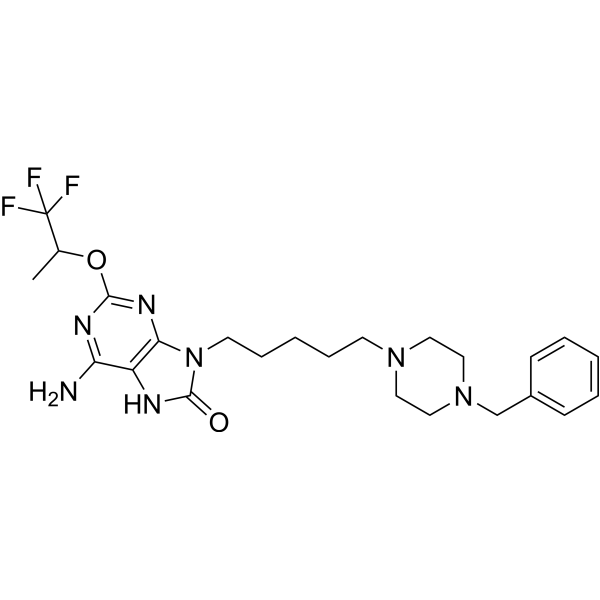
|
| DC67231 | AYK004 Featured |
AYK004 is a TLR7/8 agonist that enhances immune responses by activating the TLR signaling pathway. AYK004 is an adenine derivative with a favorable hydrophilic-lipophilic balance, which improves the loading capacity and stability in immunoadjuvant systems such as liposomes, while reducing the side effects of the immunoadjuvant system in systemic immunity .
More description
|
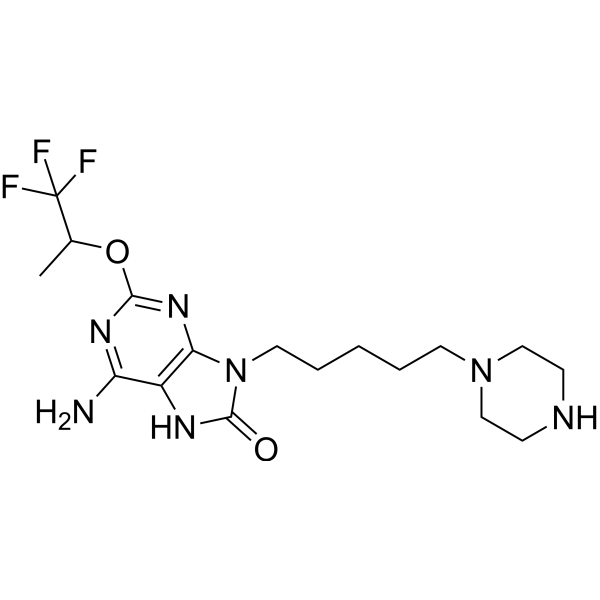
|
| DC67230 | AYK005 Featured |
AYK005 is a TLR7/8 immunologic adjuvant.
More description
|
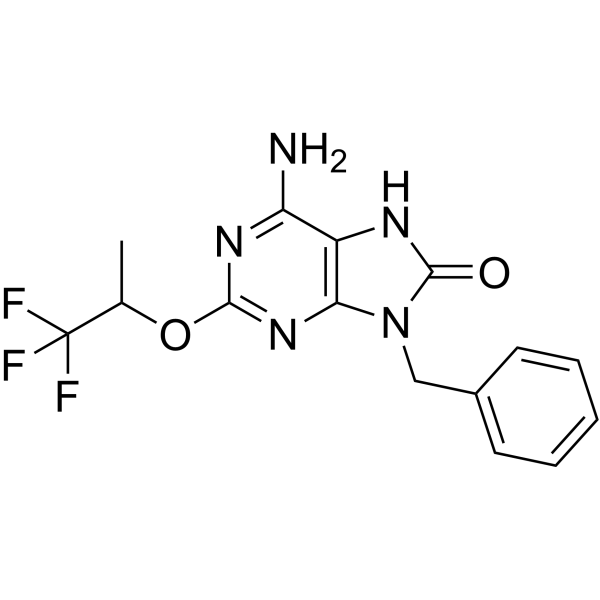
|
| DC67227 | UM-3006 Featured |
UM-3006 is a highly efficient TLR7/8 agonist that enhances immune responses by activating the TLR signaling pathway. UM-3006 holds significant research and application potential in the fields of vaccine adjuvants and immune diseases.
More description
|
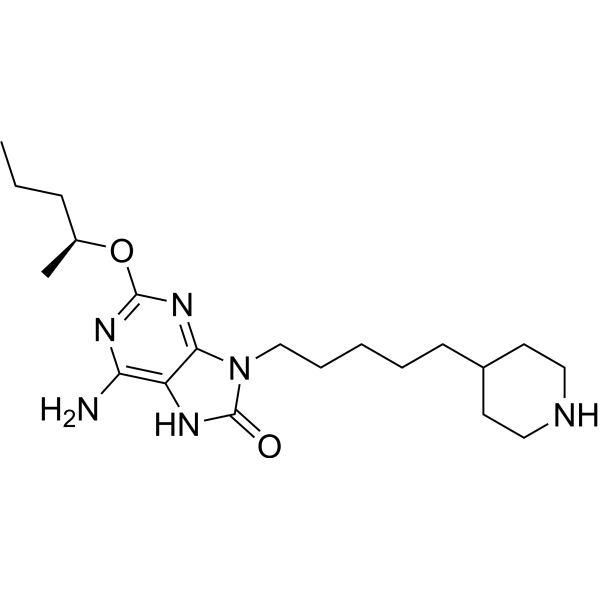
|